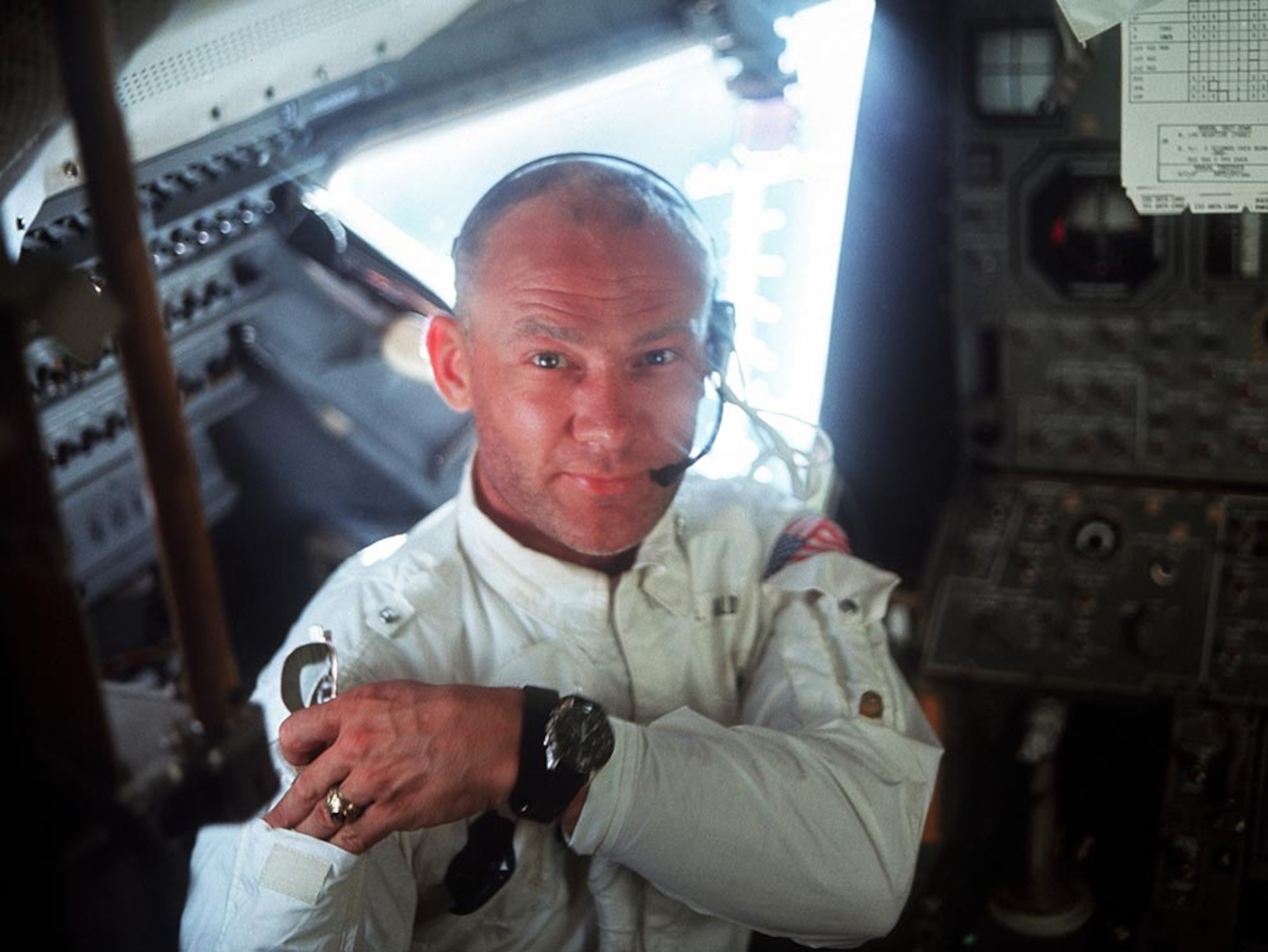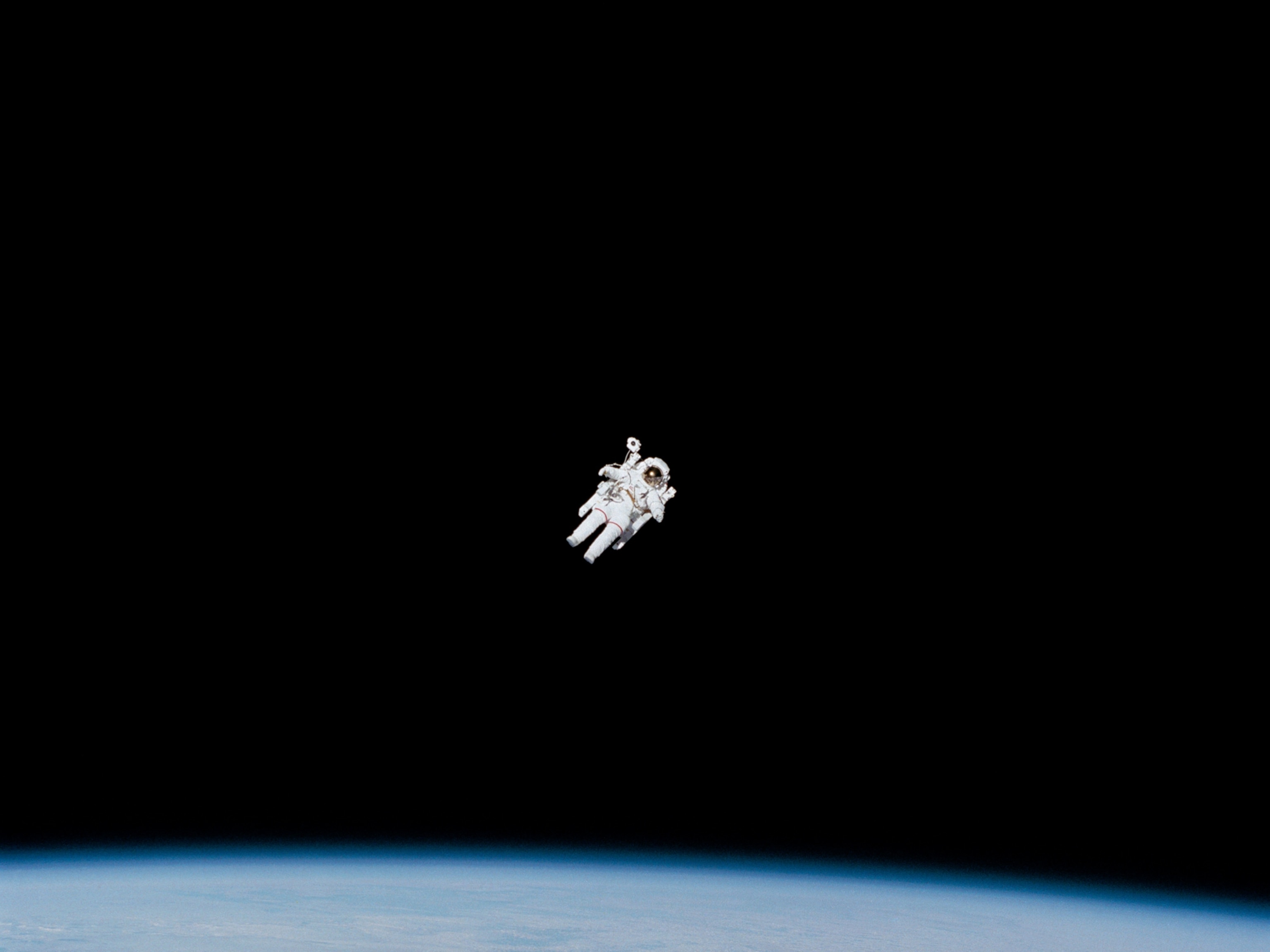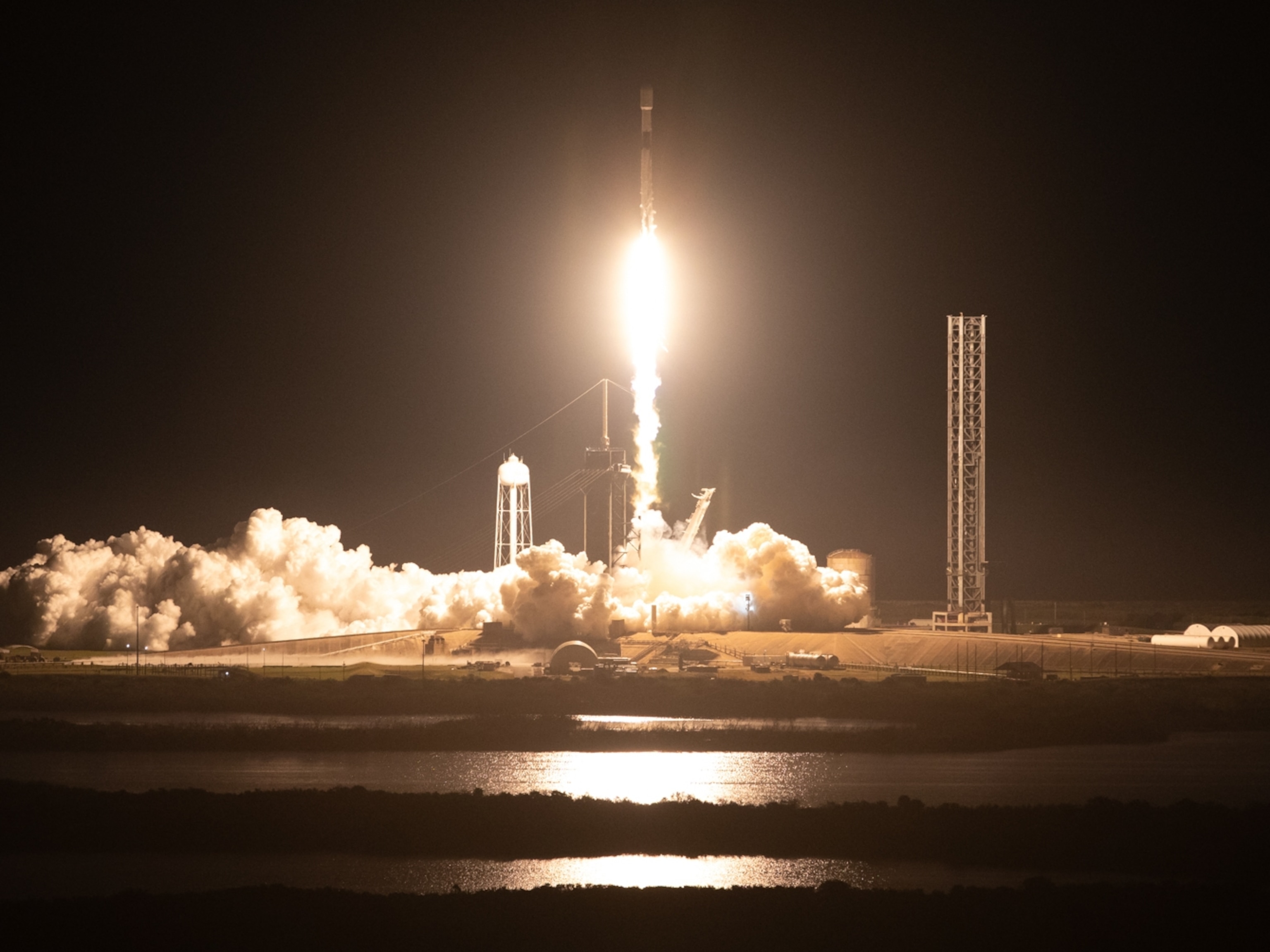For as long as humans have gazed skyward, the moon has been a focus of fascination. We could always see our cosmic partner’s mottled, cratered face by eye. Later, telescopes sharpened our views of its bumps, ridges, and relict lava seas. Finally, in the mid-20th century, humans visited Earth’s moon and saw its surface up close.
Since then, a volley of spacecraft have studied our nearest celestial neighbor, swooping low over its dusty plains and surveying its curious far side. Now, after six decades of exploration, we are once again aiming to send humans to the lunar surface.
Early forays into space
The earliest forays into lunar exploration were a product of the ongoing Cold War, when the U.S. and Soviet Union sent uncrewed spacecraft to orbit and land on the moon.
The Soviets scored an early victory in January 1959, when Luna 1, a small Soviet sphere bristling with antennas, became the first spacecraft to escape Earth’s gravity and ultimately fly within about 4,000 miles of the moon’s surface. (Read more about early spaceflight.)
Later in 1959, Luna 2 became the first spacecraft to make contact with the moon's surface when it crashed in the Mare Imbrium basin near the Aristides, Archimedes, and Autolycus craters. That same year, a third Luna mission captured the first, blurry images of the far side of the moon—where the rugged highland terrain is markedly different from the smoother basins on the side closest to Earth.
Then, the U.S. got in the game with nine NASA Ranger spacecraft that launched between 1961 and 1965, and gave scientists the first close-up views of the moon’s surface. The Ranger missions were daring one-offs, with spacecraft engineered to streak toward the moon and capture as many images as possible before crashing onto its surface. By 1965, images from all the Ranger missions, particularly Ranger 9, had revealed greater detail about the moon’s rough terrain and the potential challenges of finding a smooth landing site for humans.
In 1966, the Soviet spacecraft Luna 9 became the first vehicle to land safely on the lunar surface. Stocked with scientific and communications equipment, the small spacecraft photographed a ground-level lunar panorama. Later that year, Luna 10 launched, becoming the first spacecraft to successfully orbit the moon.
NASA also landed a spacecraft on the moon’s surface that year with the first of its Surveyor space probes, which carried cameras to explore the moon's surface and soil samplers to analyze lunar rock and dirt. Over the two years that followed, NASA launched five Lunar Orbiter missions that were designed to circle the moon and chart its surface in preparation for the ultimate goal: landing astronauts on the surface. These orbiters photographed about 99 percent of the moon's surface, revealing potential landing sites and paving the way for a giant leap forward in space exploration.(See a map of all lunar landings.)
Humans on the moon
At the time, NASA was racing to fulfill a presidential promise: In 1961, President John F. Kennedy committed the United States to landing a person on the moon before the decade was complete. The Apollo program, by far the most expensive spaceflight endeavor in history, kicked off that year, and by the time it ended in 1972, nine missions and 24 astronauts had orbited or landed on the moon.
Perhaps the most famous of those, Apollo 11, marked the first time humans had stepped on another world.
On July 20, 1969, Neil Armstrong and Edwin "Buzz" Aldrin touched down in the Sea of Tranquility in the lunar lander Eagle, while astronaut Michael Collins orbited the moon in the command module Columbia. Armstrong, who pressed the first bootprints into the moon’s surface, famously said, “That’s one small step for a man, one giant leap for mankind.” The pair stayed on the moon’s surface for 21 hours and 36 minutes before rendezvousing with Collins and heading back to Earth. (Exploring the legacy of Apollo 11 at the dawn of a new era of space travel.)
Each mission after Apollo 11 set new milestones in space travel and lunar exploration. Four months after the first humans reached the moon, Apollo 12 touched down, achieving a much more precise landing on the moon.
Apollo 13 narrowly avoided a near-disaster when on-board oxygen tanks exploded in April 1970, forcing the crew to abort a planned moon landing. All three survived.
During the third lunar landing, in January 1971, Apollo 14, commander Alan Shepard set a new record for the farthest distance traveled on the moon: 9,000 feet. He even lobbed a few golf balls into a nearby crater with a makeshift 6-iron.
Apollo 15, launched in July 1971, was the first of three missions capable of a longer stay on the moon. In the course of three days spent on the lunar surface, achievements included collecting hundreds of pounds of lunar samples and traveling more than 17 miles in the first piloted moon buggy. (The Soviet Union had sent a remotely controlled rover to the moon, Lunokhod 1, in 1970.)
Apollo 16 and Apollo 17 in 1972 were the two most recent crewed missions to the moon, and Russia’s Luna-24 crewless spacecraft in 1976 was the last to land until the following century. Samples collected during these lunar explorations produced huge amounts of knowledge about the geology and formation of the Earth’s moon. (See a timeline of the space race and its modern-day version in private spaceflight.)
After the dramatic accomplishments of the 1960s and 1970s, the major space agencies turned their attention elsewhere for several decades. So far, only 12 humans—all Americans and all men—have set foot on the moon.
Moon curiosity builds again
It wasn’t until 1994 that the moon came back into focus for the United States, with a joint mission between NASA and the Strategic Defense Initiative Organization. The Clementine spacecraft mapped the moon's surface in wavelengths other than visible light, from ultraviolet to infrared. Hiding in the more than 1.8 million digital photos it captured were hints of ice in some of the moon’s craters.
In 1999, the Lunar Prospector orbited the moon, confirming Clementine’s discovery of ice at the lunar poles, a resource that could be crucial for any long-term lunar settlement. The mission's end was spectacular: Prospector slammed into the moon, intending to create a plume that could be studied for evidence of water ice but none was observed. (Ten years later, NASA’s LCROSS spacecraft repeated this experiment and found evidence for water in a shadowed region near the moon’s south pole.)
Since 2009, the Lunar Reconnaissance Orbiter has taken high-resolution maps of the lunar surface. Between 2011 and 2012, it was joined in orbit by NASA’s twin GRAIL probes—named Ebb and Flow—which mapped the moon’s gravitational field before intentionally crashing into a region near the lunar north pole.
The recent—and future—status of moon exploration
NASA isn’t the only space agency with a surging interest in the moon. Within the last two decades, lunar exploration has gone truly international—and even commercial.
In 2007, Japan launched its first lunar orbiter, SELENE. China launched its first lunar spacecraft the same year, and India followed suit in 2008. By 2013, China became the third country to successfully land on the lunar surface, when its Chang’e-3 spacecraft deployed the Yutu rover.
More milestones—both for better and worse—were achieved in 2019. In January, another Chinese lander, Yutu-2, made history by becoming the first rover to touch down on the lunar farside. Meanwhile, India’s second lunar orbiter, Chandrayaan-2, unsuccessfully deployed a small lander, Vikram, on the lunar surface that year. (India’s space agency hopes to try again in 2021.) And in April 2019 Israel aimed for the moon with the launch of its Beresheet spacecraft. Unfortunately, even though the spacecraft achieved lunar orbit, it crashed during its attempt to land.
Unlike other spacecraft that came before it, Beresheet was built largely with private funding, heralding a new era of lunar exploration in which private companies are hoping to take the reins from governments.
(Moon photos from the 1960s were developed in space—here's how)
NASA, for one, is partnering with commercial spaceflight companies to develop both robotic and crewed landers for lunar exploration; among those companies are SpaceX, Blue Origin, and Astrobotic. Amazon CEO Jeff Bezos and Blue Origin have announced the goal of establishing a lunar base near the south pole where people could work and live. SpaceX is developing a spacecraft capable of ferrying astronauts to the moon and Mars, and is also developing a plan to bring tourists to lunar orbit. (The future of spaceflight—from orbital vacations to humans on Mars.)
And not to be overshadowed by the commercial sector, NASA is planning its own ambitious return to the moon. The agency’s Artemis program, a sister to the venerable Apollo project, aims to put the first woman—and the next man—on the moon by 2024. The backbone of Artemis is NASA’s Orion space capsule, currently in development, although the agency is also partnering with private companies to achieve its goal.
If Artemis goes well, then the near future might also see NASA and partners developing a space station in lunar orbit that could serve as a gateway to destinations on the moon’s surface—and beyond.
Blue Origin
NASA Ames Research Center: Lunar Prospector
NASA Goddard Space Flight Center: Lunar Orbiter
NASA Goddard Space Flight Center: Surveyor
NASA Jet Propulsion Laboratory: Moon Missions
NASA Mission Pages: The Apollo Missions
NASA Space Science Data Coordinated Archive: Spacecraft
Smithsonian National Air and Space Museum: Apollo Program
SpaceX
U.S. Naval Research Laboratory: Clementine
















